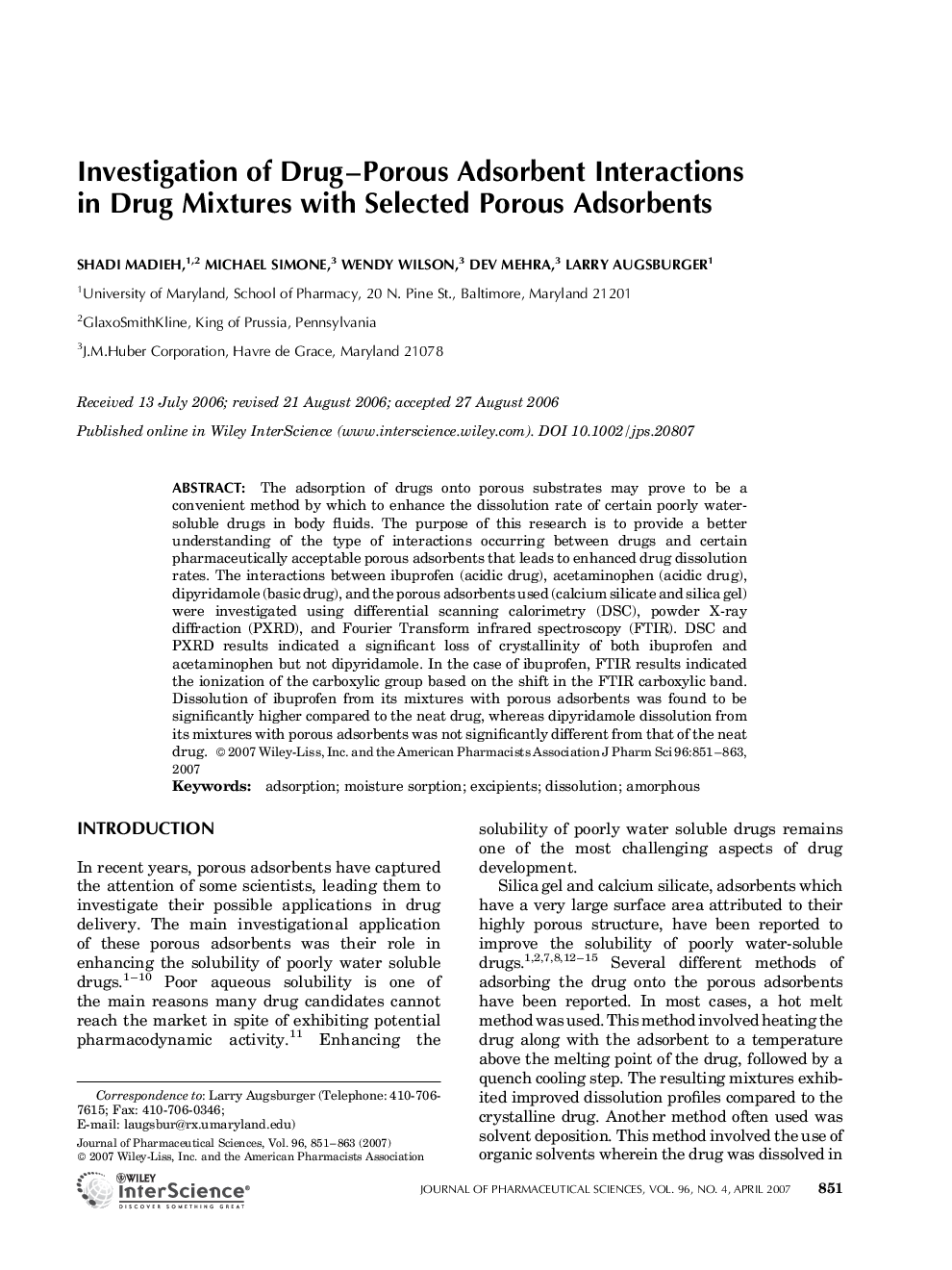| Article ID | Journal | Published Year | Pages | File Type |
|---|---|---|---|---|
| 2487754 | Journal of Pharmaceutical Sciences | 2007 | 13 Pages |
Abstract
The adsorption of drugs onto porous substrates may prove to be a convenient method by which to enhance the dissolution rate of certain poorly water-soluble drugs in body fluids. The purpose of this research is to provide a better understanding of the type of interactions occurring between drugs and certain pharmaceutically acceptable porous adsorbents that leads to enhanced drug dissolution rates. The interactions between ibuprofen (acidic drug), acetaminophen (acidic drug), dipyridamole (basic drug), and the porous adsorbents used (calcium silicate and silica gel) were investigated using differential scanning calorimetry (DSC), powder X-ray diffraction (PXRD), and Fourier Transform infrared spectroscopy (FTIR). DSC and PXRD results indicated a significant loss of crystallinity of both ibuprofen and acetaminophen but not dipyridamole. In the case of ibuprofen, FTIR results indicated the ionization of the carboxylic group based on the shift in the FTIR carboxylic band. Dissolution of ibuprofen from its mixtures with porous adsorbents was found to be significantly higher compared to the neat drug, whereas dipyridamole dissolution from its mixtures with porous adsorbents was not significantly different from that of the neat drug.
Related Topics
Health Sciences
Pharmacology, Toxicology and Pharmaceutical Science
Drug Discovery
Authors
Shadi Madieh, Michael Simone, Wendy Wilson, Dev Mehra, Larry Augsburger,
